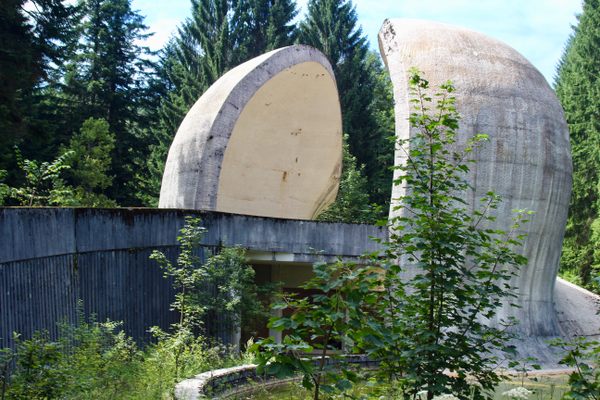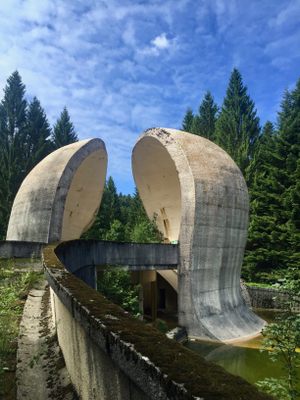About
In the former Yugoslavia, under the "Benevolent Dictator" Josip Tito, a number of monuments, or "spomeniki," were constructed in the late '60s and early '70s. They are futuristic, brutalist, and tell the stories of Balkan conflict.
The purpose of the monuments was manifold. First, their blocky, concrete construction was meant to signify the resilience of Yugoslavian communism. The futuristic style of the spomeniki symbolized forward facing optimism for the nation. Individually, the gigantic statues commemorated an event in Yugoslavian history, perhaps a victory in battle or a tragic massacre.
Some of the monuments are still in use; for example, the Kruševo Makedonium holds a museum in its belly. Others, like the Kosmaj Monument and the Mitrovica Miners Monument have been neglected, but are still regularly visited.
The monument on Grmeč Mountain is completely abandoned. Moss grows in its cracks, and the only way to find it is by wandering through the forest, as no signs point the way. The name of the architect is lost to history, as is the exact revolution the rotund spomenik is meant to commemorate.
Related Tags
Know Before You Go
Don't go with babies in summer because the mosquitoes are numerous, angry, hungry and big as B'52s.
Balkans Road Trip: Serbia, Croatia & Bosnia and Herzegovina
Traverse the beauty and history of the Balkans through locals' stories.
Book NowCommunity Contributors
Added By
Published
January 12, 2017





























